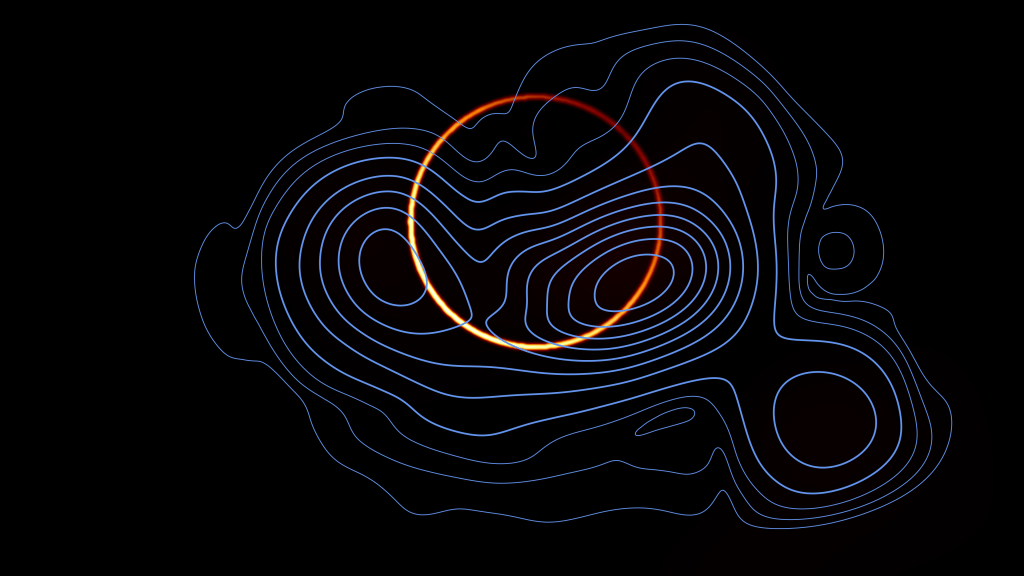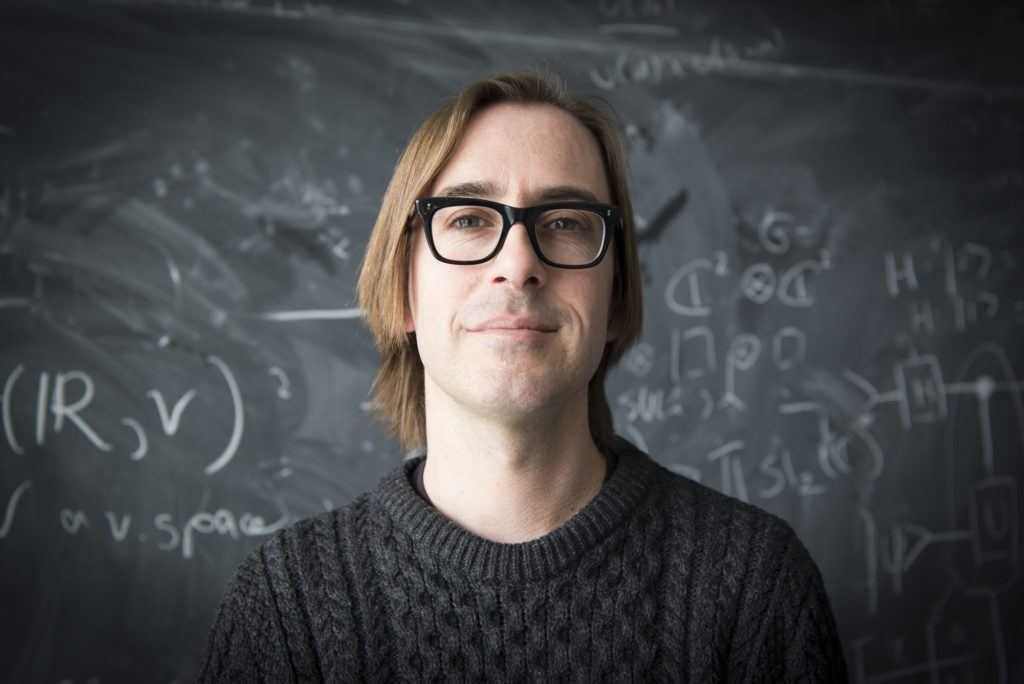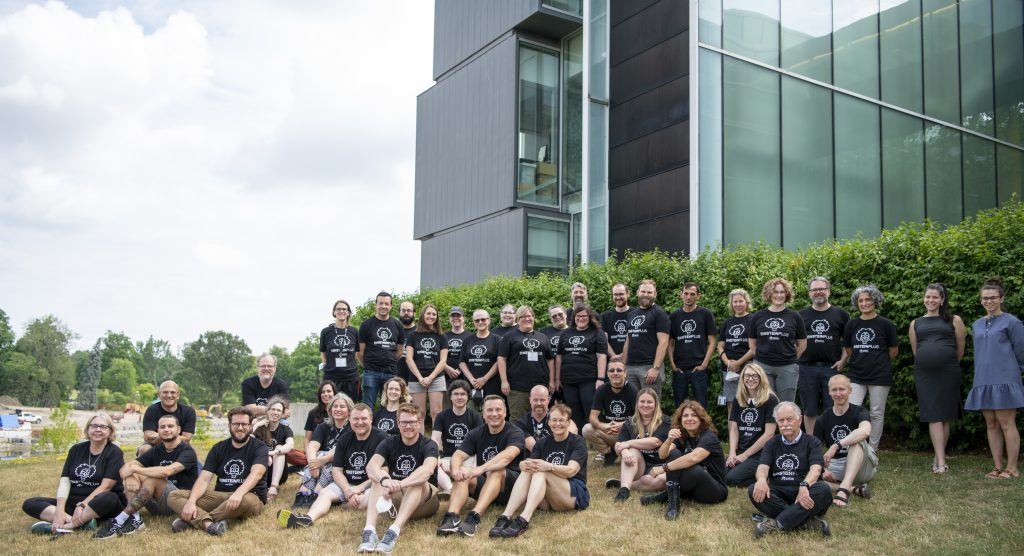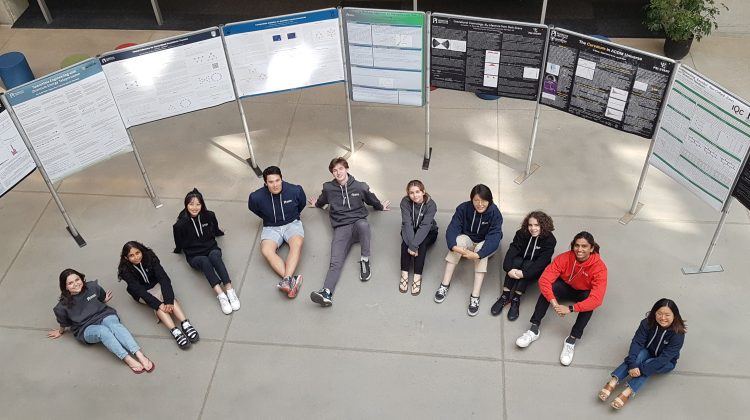
The photon ring revealed, new investigations into quantum matter, an ongoing search for dark matter, teaching the teachers, the return of Perimeter’s public lecture series, and students reaching new heights.
In case you missed it, here’s what’s been happening inside the Perimeter.
Deep dive inside the Perimeter

Perimeter researchers Chong Wang, Yin-Chen He, and Liujun Zou dig into the possibilities of quantum spin liquids – new states of matter whose properties might help achieve higher-temperature superconductivity, where materials can transmit electricity with zero resistance even at room temperatures.
Clouds of particles called ultralight bosons can gather in the high-energy regions around spinning back holes. When these clouds become large enough, they can explode. Perimeter Faculty members William East and Junwu Huang believe these explosions can act as natural particle experiments, with implications for the search for dark matter.

The first images of black holes are here, and now researchers including Avery Broderick are refining them to pick out new details like the ‘photon ring,’ a phenomenon predicted by theories of gravity. “We turned off the searchlight to see the fireflies,” Broderick says of the method used to isolate the photon ring from the noisy region around the black hole. Read more about this research from Space.com, Physics World, and Cosmos.
Perimeter’s Robert Spekkens is working with Kevin Resch from the University of Waterloo’s Institute for Quantum Computing to test causality in quantum mechanics. Using Bell experiments with entangled particles, they tested various causal models to see if the models could predict the experimental results. By looking for ‘overfitting,’ Spekkens and Resch were able to weed out causal models that fit the data but may not actually offer the best explanation for the result.

Several Simons Emmy Noether Fellows visited Perimeter this year, including experimental physicist Urbasi Sinha, whose collaboration with Perimeter theorists delves into the world of superposition, tests of the Born rule, and applications in quantum computing. Another Simons Emmy Noether Fellow, Malena Tejeda-Yeomans, is working on understanding quark-gluon plasma, the high-density matter that existed after the big bang but before atoms could form.
Other news items
A new collaboration between researchers at Perimeter, Stony Brook University, and Northwestern University has demonstrated how the Vera Rubin Observatory’s Legacy Survey of Space and Time (LSST) may provide answers in the search for dark matter.
Are we trying to understand the universe with the wrong type of number system? Latham Boyle and Perimeter alum Cohl Furey think a system of eight-dimensional numbers called “octonions” are a promising alternative to our usual mathematical tools. New Scientist
New funding announced for quantum cybersecurity research, led by Michele Mosca. The Waterloo Region Record
Is it possible to replace unitarity in quantum physics with isometry? Bianca Dittrich is just one researcher who thinks it’s a worthwhile avenue of study. Quanta Magazine
Awards and honours

Kevin Costello has earned the John L. Synge Award from the Royal Society of Canada, for his work on the mathematics underlying quantum field theory. Costello holds the Krembil Foundation William Rowan Hamilton Chair at Perimeter. His research has unveiled new mathematical structures linking representation theory, geometry, and field theory. These ideas have deep connections to particle physics, condensed matter theory, and early-universe cosmology.
The Canadian Hydrogen Intensity Mapping Experiment (CHIME) Collaboration – including Perimeter’s Kendrick Smith and Ue-Li Pen – have been awarded the Brockhouse Canada Prize for Interdisciplinary Research in Science and Engineering.
Training

This summer, 62 students from around the world took part in the PSI Start online school, a crash course in theoretical physics designed to give undergraduates in their final year a boost. Eleven students from eight countries also came to Perimeter in person as PSI Start interns, where they got hands on experience working with Perimeter faculty. The experience was “something really special,” says Rahul Balaji, one of the interns.
It was also a stand-out year for the Fields-AIMS-Perimeter postdoc fellowship program. This program is designed to advance science in Africa and the world by supporting African researchers. This summer, the three participating institutes announced that the program would be extended for another five years to 2027. Ali Assem Mahmoud, one of the 2021/22 fellows from Cairo, Egypt, was based at Perimeter.
Outreach

It’s like “Disney World for physics teachers,” says Tanya Skelhorn, a teacher and attendee of EinsteinPlus, Perimeter’s boot camp for physics teachers across Canada and the world. It’s a professional development program that immerses teachers in pedagogical best practices and current physics research at the same time.
Meanwhile, high school students from around the world joined in this year’s ISSYP program, an online introduction to fundamental physics. Since the program began 20 years ago, there are now over 900 ISSYP alumni in 60 countries. One of those alum, Perimeter Faculty Timothy Hsieh, gave a keynote address, introducing this year’s students to quantum theory.
A dark matter extravaganza! For the first time since the pandemic, Perimeter opened its doors for an in-person (and online) public lecture, in conjunction with the Arthur B. McDonald Canadian Astroparticle Physics Research Institute. Perimeter’s Katie Mack and McDonald Institute’s Ken Clark teamed up to give a deep dive into the current state of dark matter research. If you missed the event, the broadcast is available on Youtube.
Fun stuff and gems from the archive

Chalkboards are everywhere at Perimeter, and with conferences returning to the space after more than two years, they are getting good use. Take a look back at The Living Chalkboard, a physics-inspired artistic performance by former Perimeter artist-in-residence Alexa Meade. Watch until the end for the mind-bending result featuring Faculty member Laurent Freidel and Teaching Faculty member Lauren Hayward.
Here’s some Perimeter poetry to go with the art: eight geekily poetic haiku about physics.





















































































